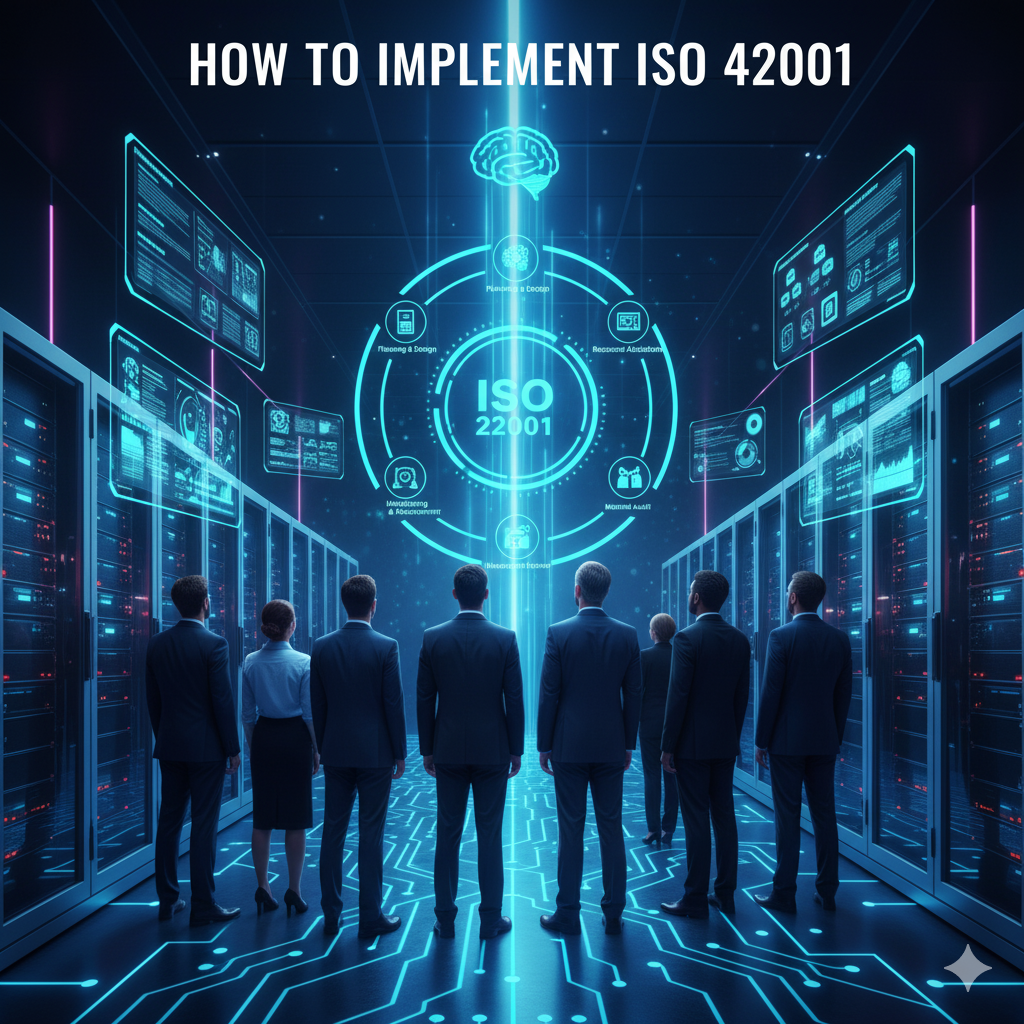AI in call centers refers to artificial intelligence technologies that automate customer interactions, assist human agents, and optimize contact center operations.
Modern contact centers increasingly deploy AI systems to handle routine customer inquiries while freeing human agents for complex problems. These technologies include chatbots, voice recognition systems, and intelligent routing tools that direct customers to appropriate resources. AI applications range from simple automated responses to sophisticated systems that understand natural language and provide personalized assistance.
The adoption of AI in contact centers has accelerated significantly in recent years. According to McKinsey's global survey, 78 percent of organizations now use AI in at least one business function, with contact centers emerging as a primary deployment area. Service operations rank among the top three business functions for AI implementation alongside marketing and sales.
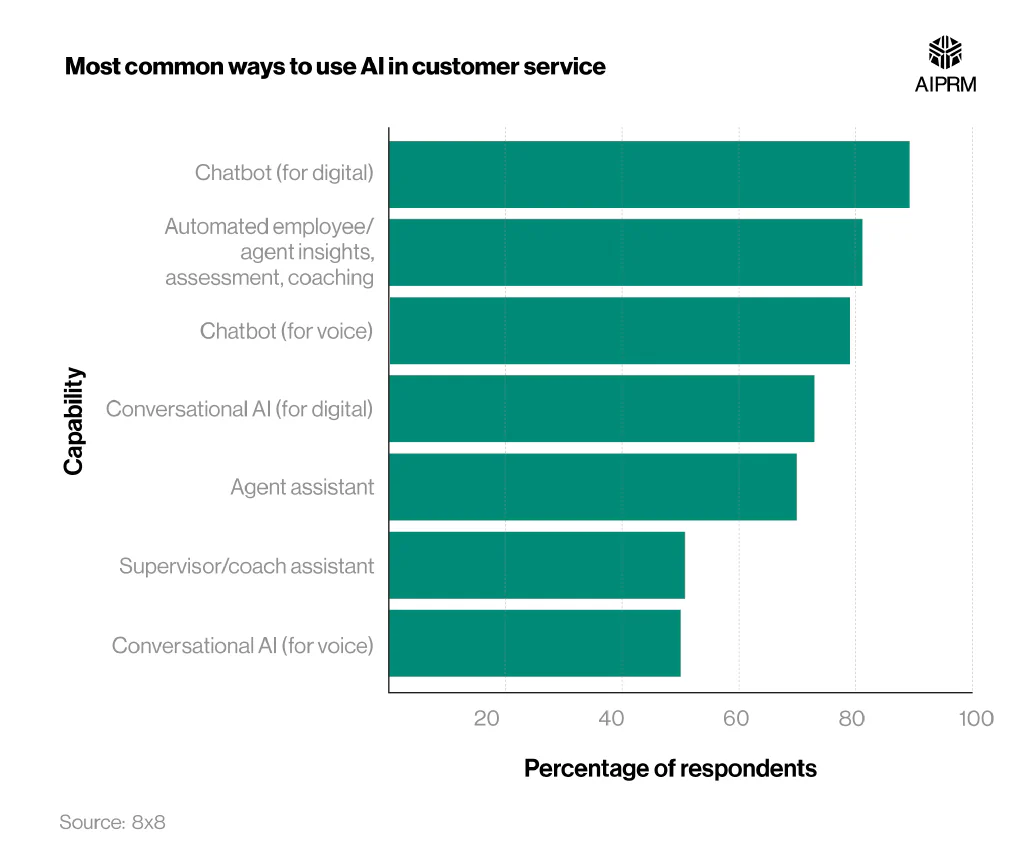
Source: AIPRM
Contact centers prove particularly suitable for AI deployment due to high volumes of repetitive interactions, standardized processes, and clear performance metrics. Organizations can measure AI impact through metrics such as call resolution times, customer satisfaction scores, and operational costs. These measurable outcomes make contact centers ideal testing grounds for AI technologies before broader organizational deployment.
What AI in Call Centers Actually Does
AI in call centers transforms how companies handle customer service by automating routine tasks and helping human agents work more effectively. Instead of customers waiting in long phone queues, AI chatbots can instantly answer common questions about account balances, order status, or store hours.
When you call a company and hear "Press 1 for billing, Press 2 for technical support," that's basic automation. Modern AI goes much further by understanding what customers say in their own words and responding appropriately. If someone says "I can't log into my account," the AI system recognizes this as a login problem and either provides troubleshooting steps or connects them to the right specialist.
The technology works alongside human agents rather than replacing them entirely. While AI handles simple questions, human representatives focus on complex issues that require problem-solving skills and emotional understanding. AI also helps agents during calls by displaying relevant customer information and suggesting helpful responses based on what the customer is saying. This integration improves the overall customer experience across industries by providing faster, more accurate service.
Core AI Technologies Used in Contact Centers

Source: HiringBranch
Conversational AI and Chatbots
Conversational AI refers to technology that enables computers to understand and respond to human language naturally. Unlike basic chatbots that only recognize specific keywords, conversational AI can understand the meaning behind different ways of asking the same question.
These systems use natural language processing to interpret customer requests written in chat messages or spoken over the phone. For example, whether a customer types "Where's my order?" or "Can you tell me the status of my recent purchase?" the AI understands both phrases mean the same thing.

Source: ResearchGate
When conversations become too complex for AI to handle, the system seamlessly transfers customers to human agents. The AI provides the agent with a summary of the conversation so customers don't have to repeat their information. These AI agents in customer service demonstrate sophisticated understanding and memory capabilities.
Intelligent Call Routing
Smart call routing systems analyze multiple factors to connect customers with the most qualified available agent. The technology considers the customer's account history, the type of problem they're calling about, and which agents have the right skills to help.
- Skills-based matching — Routes technical questions to agents with technical training
- Language preferences — Connects customers to agents who speak their preferred language
- Priority handling — Identifies VIP customers or urgent issues for immediate attention
- Workload balancing — Distributes calls evenly to prevent some agents from becoming overwhelmed
The system also learns from past interactions. If a customer previously worked with a specific agent who resolved their issue well, the routing system might prioritize connecting them to that same agent when possible.
Real-Time Agent Assistance
AI provides live support to human agents during customer conversations by analyzing what's being discussed and offering relevant help. As customers explain their problems, the AI system searches knowledge bases and suggests relevant solutions or procedures.
Sentiment analysis monitors how customers are feeling during the conversation by analyzing their tone of voice and word choices. If the system detects frustration, it can alert supervisors or suggest techniques to help de-escalate the situation.
The technology also helps ensure compliance by reminding agents to follow required procedures or obtain necessary information before completing transactions. This reduces errors and helps maintain regulatory compliance across all customer interactions.
Automated Quality Assurance
Traditional quality assurance teams could only review a small percentage of customer interactions due to time constraints. AI quality assurance systems can analyze 100 percent of calls, chats, and emails to identify patterns and issues that human reviewers might miss.
These systems evaluate interactions based on predefined criteria such as whether agents followed proper procedures, used appropriate language, and resolved customer issues effectively. The AI generates detailed reports that help supervisors identify training opportunities and recognize excellent performance.
Key Benefits of Implementing AI in Contact Centers
Immediate Cost Reduction
AI automation significantly reduces the cost of handling routine customer inquiries. According to IBM research, chatbots can handle up to 80 percent of routine customer questions without human intervention.
Simple transactions like checking account balances, updating contact information, or tracking orders can be completed instantly through AI systems. This automation frees human agents to focus on complex issues that generate more value for both customers and the business.
Organizations also save money on training costs because AI systems provide consistent responses and reduce the amount of information agents need to memorize. New employees can become productive faster when AI tools provide real-time guidance and support.
Enhanced Customer Experience
AI systems provide 24/7 availability, meaning customers can get help outside normal business hours without waiting for the next day. This around-the-clock service particularly benefits customers in different time zones or those who work non-traditional schedules.
Response times improve dramatically when AI handles simple questions instantly rather than requiring customers to wait in phone queues. Customers can resolve basic issues in seconds through chat interfaces or voice assistants.
Personalization becomes possible when AI systems access customer history and preferences to provide tailored responses. The technology can remember past interactions and proactively suggest solutions based on previous successful resolutions.
Improved Agent Performance
AI tools make human agents more effective by providing instant access to relevant information during customer conversations. Instead of placing customers on hold to search through multiple systems, agents receive real-time suggestions and relevant knowledge base articles.
Performance monitoring through AI helps identify areas where individual agents excel and where they might benefit from additional training. This data-driven approach to coaching leads to more targeted skill development and better overall performance.
Stress reduction occurs when agents have reliable AI assistance to help handle difficult situations. The technology provides confidence that they'll have the information and support needed to resolve customer issues effectively.
Scalable Operations
AI enables contact centers to handle larger volumes of customer interactions without proportionally increasing staff. During peak periods like holidays or product launches, AI systems can absorb much of the additional volume while maintaining service quality.
The technology also supports business growth by providing a foundation that can expand to serve more customers across different markets and time zones without requiring significant infrastructure investments in each new location.
How to Implement AI in Your Contact Center
Assess Your Current Operations
Start by documenting your most common customer inquiries and identifying which interactions consume the most agent time. Look for patterns in the types of questions customers ask and note which issues agents find repetitive or time-consuming.
Evaluate your existing technology infrastructure to understand what systems you currently use and how well they might integrate with AI solutions. Consider factors like data quality, system compatibility, and security protocols that will affect AI implementation.
Define specific goals for what you want AI to achieve, such as reducing wait times, improving customer satisfaction scores, or handling a higher volume of inquiries with existing staff. Clear objectives help guide technology selection and measure success after implementation.
Choose the Right AI Solution
Different AI technologies address different needs, so understanding your specific requirements helps narrow down options. If most customer inquiries are simple questions, a chatbot might be the best starting point. If agent productivity is the main concern, real-time assistance tools might provide more value.
Evaluate vendors based on their experience with contact centers and their ability to integrate with your existing systems. Look for solutions that offer gradual implementation rather than requiring complete system overhauls.
Consider factors like ease of use for your agents, customization options to match your specific processes, and ongoing support availability to help optimize performance over time. Working with AI consulting services can help navigate vendor selection and implementation planning.
Plan a Phased Implementation
Begin with a pilot program focusing on one specific area, such as answering frequently asked questions or handling password reset requests. This approach allows you to test the technology and refine processes before expanding to other areas.
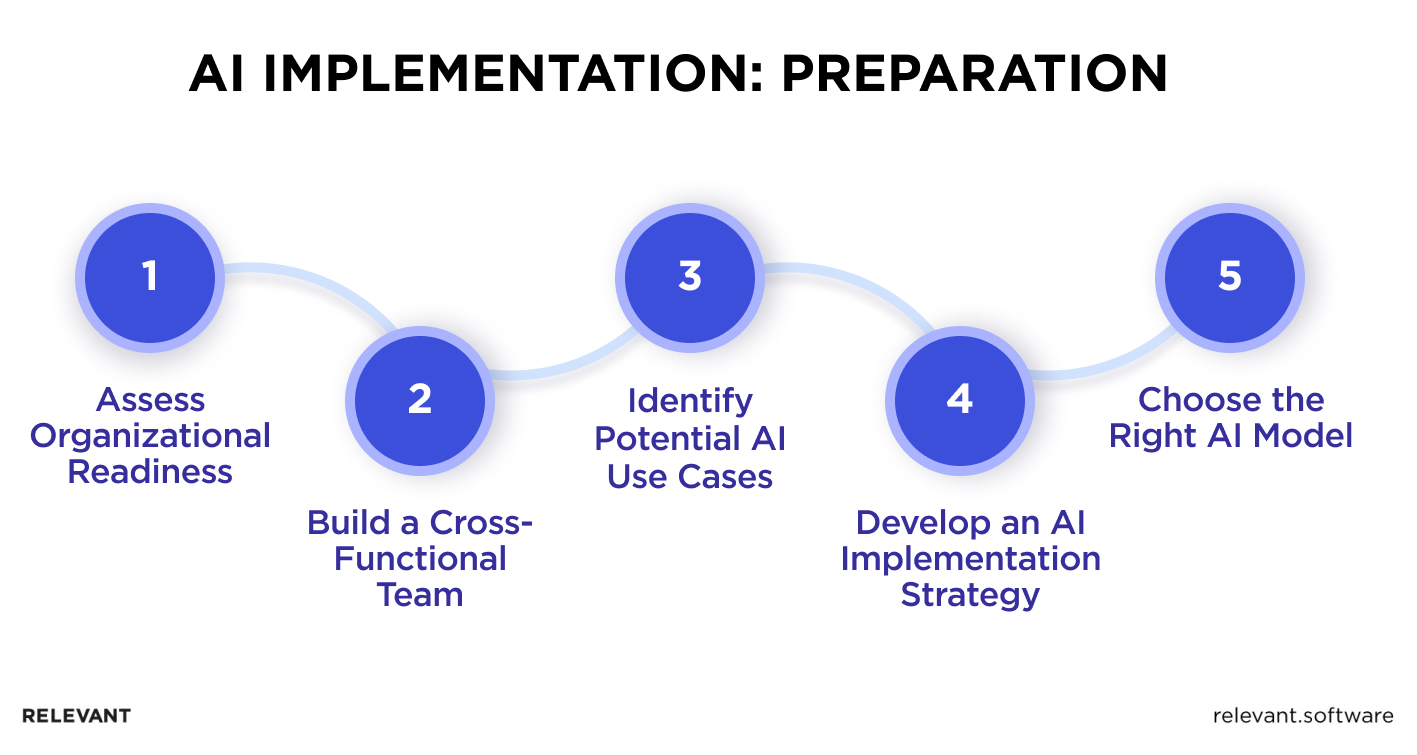
Source: Relevant Software
Training requirements include helping agents understand how to work alongside AI systems and when to escalate issues beyond AI capabilities. Provide comprehensive training that covers both technical aspects and workflow changes.
Monitor performance closely during initial phases to identify areas for improvement and ensure the AI system meets quality standards before expanding its role in customer service operations.
Optimize and Expand
Regular analysis of AI performance helps identify opportunities to expand automation to additional types of inquiries or improve existing capabilities. Look for patterns in interactions that AI handles successfully versus those that require human intervention.
Continuous improvement involves updating AI knowledge bases, refining automated responses, and adjusting routing rules based on performance data and customer feedback.
Consider expanding to additional channels like social media or email once the initial implementation proves successful and stable.
Common Implementation Challenges and Solutions
Data Quality Issues
AI systems require high-quality, consistent data to function effectively. Poor data quality leads to inaccurate responses and frustrating customer experiences. Organizations often discover data inconsistencies across different systems when implementing AI.
Address data quality problems by standardizing formats, removing duplicates, and filling gaps in customer information before AI deployment. This preparation work typically requires 25 to 30 percent of implementation time but ensures better AI performance.
Establish ongoing data governance practices to maintain information quality as new data enters the system. Regular data audits help identify and correct issues before they affect AI performance.
Integration Complexity
Connecting AI systems with existing contact center technology can be challenging, especially for organizations using older systems. Legacy platforms might lack modern APIs or use outdated data formats that complicate integration.
Work with vendors who offer pre-built connectors for common contact center systems to reduce integration complexity and costs. API-first solutions provide more flexibility for connecting with diverse technology environments.
Plan for integration costs that typically consume 25 to 40 percent of implementation budgets. Organizations with complex legacy systems should expect higher integration expenses and longer timelines.
Staff Resistance to Change
Employees often worry that AI implementation will eliminate their jobs or make their work more difficult. These concerns can lead to resistance that undermines implementation success.
Address employee concerns through transparent communication about how AI will enhance rather than replace human capabilities. Explain that AI handles routine tasks while agents focus on complex problem-solving that requires human skills.
Involve frontline agents in the planning process to gather their input about workflow improvements and potential challenges. Employees who participate in decision-making are more likely to support implementation efforts.
Regulatory Compliance
Contact centers handle sensitive customer information that must be protected according to various regulations. AI systems must comply with requirements like GDPR for data protection, HIPAA for healthcare information, and PCI DSS for payment processing.
Implement comprehensive security measures including encryption for data in transit and at rest, access controls that limit system access to authorized personnel, and audit trails that document AI decisions for regulatory reviews. Understanding responsible AI principles is crucial for maintaining compliance.
Work with legal teams to ensure AI implementations meet all applicable regulatory requirements in the markets where you operate. Different regions may have varying requirements for data handling and customer consent.
Measuring AI Success
Essential Performance Metrics
Track first-call resolution rates to measure how often AI systems resolve customer issues without requiring additional contact. This metric indicates both AI effectiveness and customer satisfaction with automated interactions.
Monitor average handle time to quantify efficiency gains from AI assistance and automation. Measure this metric across different interaction types to identify where AI creates the most significant time savings.
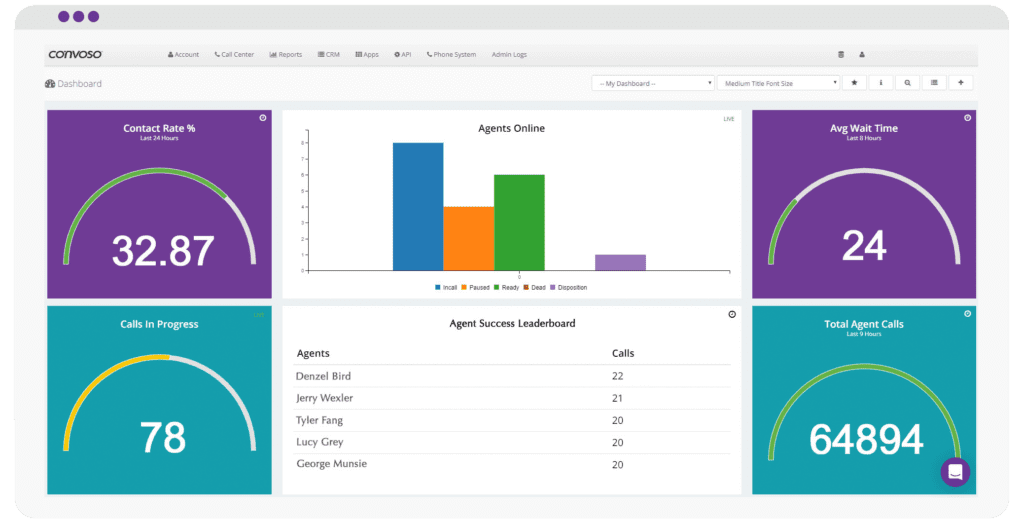
Source: Convoso
Customer satisfaction scores reveal whether AI maintains or improves service quality while delivering operational efficiency. Collect feedback through post-interaction surveys and compare scores between AI-assisted and traditional interactions.
Agent productivity improvements can be measured through calls handled per hour, resolution accuracy rates, and successful interaction outcomes. These metrics show how AI assistance enables agents to serve more customers effectively.
Financial Impact Assessment
Calculate cost per interaction before and after AI implementation to quantify direct savings from automation. Include factors like agent time, system resources, and overhead costs in these calculations.
Consider both implementation costs and ongoing operational expenses when evaluating return on investment. Implementation typically requires significant upfront investment, while ongoing costs include maintenance, updates, and system monitoring.
Factor in soft benefits like improved customer retention, increased satisfaction scores, and enhanced brand reputation that may not have immediate financial impact but contribute to long-term business value.
Long-Term Value Tracking
Establish baseline measurements before AI implementation to enable accurate comparison of improvements over time. Document current performance levels across all relevant metrics to serve as reference points.
Monitor trends in key performance indicators to understand how AI systems improve with experience and optimization. Many AI systems become more effective as they process more interactions and receive refinements.
Assess competitive advantages gained through AI implementation, such as ability to offer 24/7 service, faster response times, or more personalized customer interactions that differentiate your organization from competitors.
Getting Started with Professional Support
Working with AI Vendors
Select vendors with proven experience in contact center implementations rather than general AI providers. Contact center environments have unique requirements for integration, compliance, and performance that specialized vendors understand better.
Evaluate vendor support capabilities including training programs, ongoing technical assistance, and optimization services. Implementation success often depends as much on vendor support as on technology capabilities.
Consider vendors that offer flexible pricing models and gradual implementation options rather than requiring large upfront commitments. This approach reduces risk and allows you to validate performance before expanding AI usage.
Implementation Best Practices
Start with clearly defined, limited use cases rather than attempting comprehensive AI deployment immediately. Focus initial efforts on high-volume, low-complexity interactions where AI can deliver obvious value.
Establish success criteria and measurement methods before beginning implementation to ensure objective evaluation of AI performance. Define specific targets for metrics like resolution rates, customer satisfaction, and cost reduction.
Plan for ongoing optimization and refinement as part of the implementation process. AI systems improve with experience and adjustment, so budget time and resources for continuous improvement activities.
Frequently Asked Questions
How much does it cost to implement AI in a small call center?
Small contact centers can begin AI implementation with basic chatbot solutions for $10,000 to $50,000, depending on feature requirements and integration complexity. These entry-level implementations typically handle common inquiries like account information, order status, and basic troubleshooting.
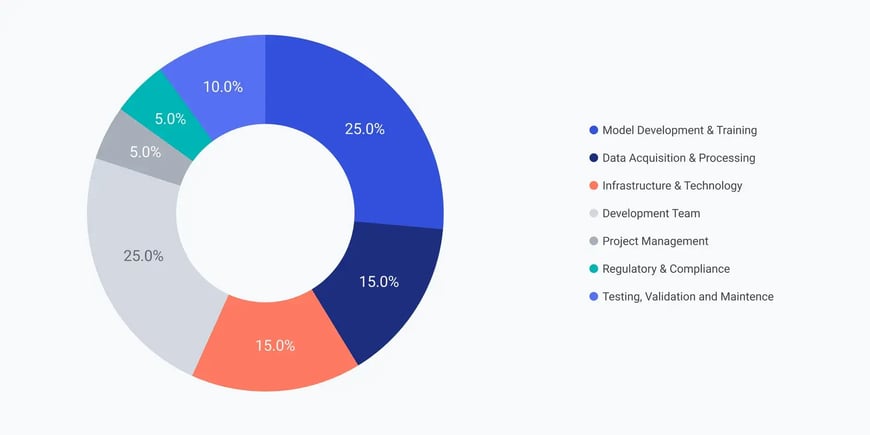
Source: Coherent Solutions
Costs increase based on the sophistication of AI features, number of integration points with existing systems, and level of customization required. Organizations should also budget for ongoing maintenance expenses that typically run 15 to 22 percent of initial implementation costs annually.
Can AI chatbots handle complex customer service issues?
Current AI chatbots excel at handling routine inquiries but have limitations with complex problems that require nuanced understanding or creative problem-solving. Most implementations use a hybrid approach where AI handles initial contact and simple issues while escalating complex problems to human agents.
The handoff process preserves conversation context so customers don't need to repeat information when transferred to human agents. This approach combines AI efficiency with human expertise for optimal customer experience.
What happens if the AI system makes mistakes with customer information?
AI systems include safeguards and escalation procedures to minimize errors and provide correction mechanisms when mistakes occur. Quality assurance monitoring can identify patterns that indicate potential problems before they affect large numbers of customers.
Organizations typically maintain human oversight capabilities and clear procedures for correcting AI errors quickly. Training AI systems with high-quality data and implementing regular performance monitoring reduces the likelihood of significant mistakes.
How do customers typically react to AI-powered customer service?
Customer acceptance of AI in customer service varies based on implementation quality and the complexity of their needs. Research indicates that customers appreciate AI for simple, quick interactions but prefer human agents for complex or sensitive issues.
Successful implementations focus on transparency about AI capabilities and provide easy access to human agents when needed. Customers respond positively when AI systems provide fast, accurate responses and seamless transitions to human help for complex issues.
Will implementing AI require hiring new technical staff?
AI implementation may require additional technical expertise, but many organizations start by training existing staff rather than hiring new employees. The level of technical support needed depends on the complexity of chosen AI solutions and existing IT capabilities.
Cloud-based AI solutions typically require less internal technical expertise than on-premises implementations. Many vendors provide comprehensive support services that reduce the need for specialized internal staff during initial implementation phases.

